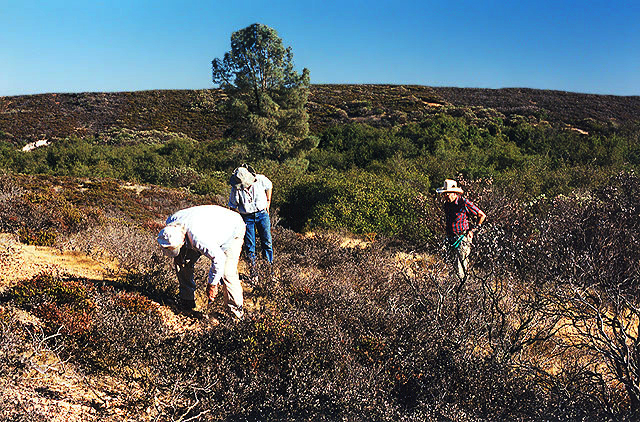
|
After leaving the Discovery Site--seen in the previous image--we drove to perhaps the most prolific fossil site of all in the Ione Basin--a specific locality that has become known to paleobotanists as "Lygodium Gulch," named after the rather common to abundant occurrence of a fossil climbing fern found there (Lygodium kaulfussi, whose closest modern equivalent is Lygodium palmatum now native to the southeastern and eastern United States; it has been recorded from Mississippi, Alabama and Georgia north to New England)--the only known locality west of the Rocky Mountains to yield climbing fern fossils now housed in a museum. Seen here are my late father (red plaid shirt, an Engineering Geologist) and paleobotanists Dr. Diane Erwin (blue jeans) and Howard Schorn examining the rich fossil-bearing outcrops at Lygodium Gulch. Three years later, during the summer of 2002, Howard Schorn and I opened up a major quarry here in order to gather the first formal, systematic, scientific collection of fossil leaves from the Middle Eocene Ione Formation of the Ione Basin, California. Image snapped on October 19, 1999. Please note: All fossil localities in the Ione Formation of Amador County, California, presently occur on private property; explicit permission from the land owners must be secured before collecting fossils there. |